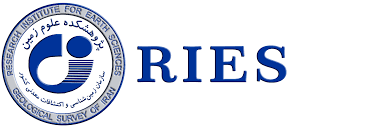Research Institute of Earth Sciences Strategy
Strategy of the Geoscience Research Institute
The executive plan of the research institute since 2012
So that the usual meaningful vision and strategy are paralyzing for any organization, and without them, prioritizing activities for a research and technology organization is very difficult and often leads to inadequate and scattered distribution of project resources at the organization level without the minimum necessary resources being available in any part. As a result, the way to deal with this challenge is to take a practical step to define and implement a new strategy. Carrying out research projects, developing them, and prioritizing them is of great importance.
Implementing and controlling the strategy, as well as evaluating the performance of the system, guarantees the success of the organization in this direction. In order to introduce a tool for implementing and controlling the strategy, the Geoscience Research Institute is evaluated as a government research and technology organization. On this basis, while briefly reviewing the definition of research and technology organizations, the challenges facing them, the description and mission of the research institute are reviewed. Also, by introducing the Balanced Scorecard (BSC) method as a tool for measuring organizational performance and also a tool for implementing and controlling strategy, the dimensions of this methodology and various aspects of this method are examined. Finally, in the third section, by developing the Balanced Scorecard model for research and development activities, a proposed model for this area will be presented.
Considering the aforementioned information regarding the adoption of strategy and strategic plans, this research institute has tried to formulate and implement a strategy for its organization. This report is in line with the implementation of the strategic plan of this organization.
Since science and technology organizations, in order to carry out their mission, need to develop a good and correct business strategy and carry out effective operations in the development of their operations. A framework that can help achieve equal achievement between the two and a management system, today many research and technology institutions are facing major strategic and operational challenges is the BSC, which instills a two-dimensional concept in management systems because it can be both a system for managing the company's strategy and a system for measuring performance. Due to the multidimensional nature of the Geoscience Research Institute in fulfilling its primary responsibility to the Geological and Mineral Exploration Organization of the country and, through it, to government departments, the stakeholder perspective has been used in developing the balanced scorecard. To create the strategy maps of the research institute, it is necessary to first ensure the interaction and full coverage of the strategies developed in the previous sections with four perspectives. The internal processes and growth and learning aspects create the strategy and describe how to implement it. The research institute should focus on the important internal processes that determine how to create and maintain value and provide differentiated value to the customer and are more important for enhancing the productivity and securing the credibility of the organization.
Internal processes are also divided into the following four categories:
Each of these includes hundreds of sub-processes that create value in different ways. Managers who use the art of strategy should define the important processes that are important for creating and providing differentiated value to the customer. We call these important processes strategic themes. In this regard, the mission statement that was developed with the participation of the research institute managers, managers and consultants of the Geological and Mineral Exploration Organization of the country and the study team is as follows:
• Operational management and project management: customer service or project implementation;
• Customer management: creating and strengthening relationships with customers;
• Innovation: developing new activities, services, processes and relationships;
• Legal and social responsibilities: complying with laws and social expectations and creating a community
Mission of the Geosciences Research Institute
The mission of the Geosciences Research Institute is to conduct applied and developmental research in the earth sciences, including geology and exploration, in order to help increase the scientific capacity and information of the country's earth sciences. It carries out this task through the production, publication, development, promotion and education of earth sciences knowledge and strives to meet the research needs of the Geological and Mineral Exploration Organization of the country and other domestic and foreign natural and legal entities, and in this regard, it makes optimal use of the potential and actual facilities and resources of the Geological and Mineral Exploration Organization.
Vision of the Institute of Earth Sciences
The Institute strives to be a pioneer, a national reference, and an internationally recognized authority in applied and developmental research in Earth Sciences.
Objectives of the Institute
• To assist in sound policy-making in Earth Sciences and national development programs by fully fulfilling its research role towards the country, the Ministry of Environment, the Ministry of Health, the parent organization (the National Geological and Mineral Exploration Organization) and other applicants.
• To assist in solving the country's issues and problems that Earth Sciences can be effective in solving, such as natural hazards, mineral exploration, preventing raw material sales with processing knowledge, water-related issues, etc.
• To assist in increasing the country's scientific capacity and information in Earth Sciences.
• To increase self-confidence and self-reliance in the fields of finance, transactions, and employment.
• To be a leader in innovation and technology.
The core values of the Earth Sciences Research Institute are:
• Adherence to religious, ethical and professional values, including adherence to trustworthiness, law-abidingness, respect for material, intellectual and spiritual property, and preservation of human dignity.
• Performing tasks and providing services in a continuous, quality, fast, smooth, easy, effective and humble manner to stakeholders and applicants and gaining their satisfaction.
• Playing an effective and efficient role in scientific fields related to Earth Sciences in the
